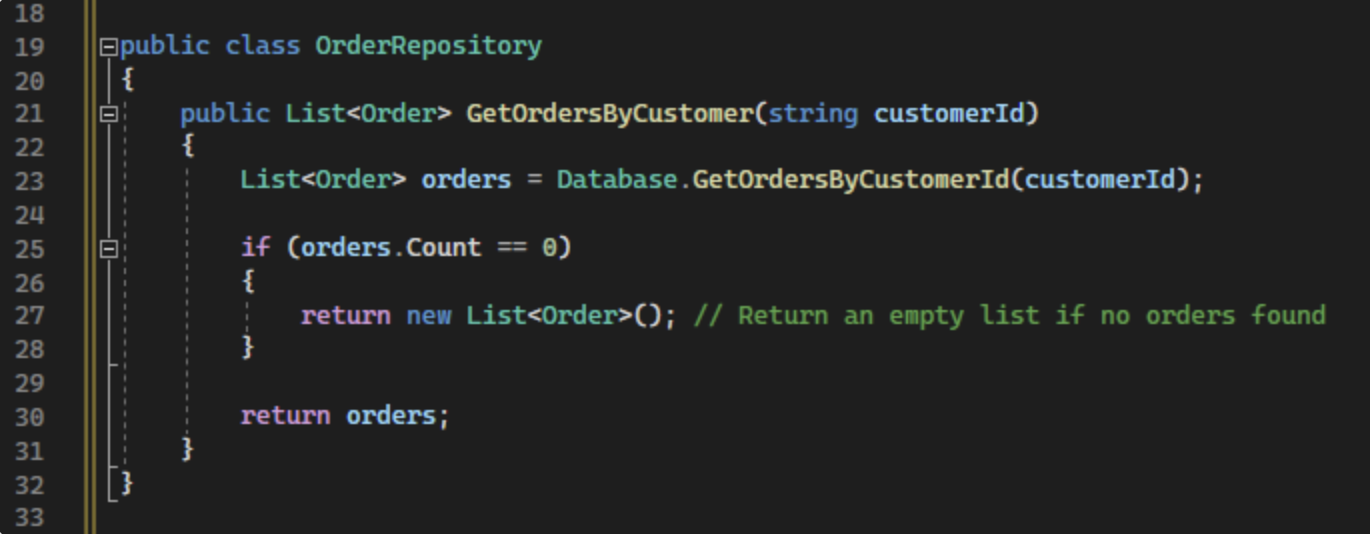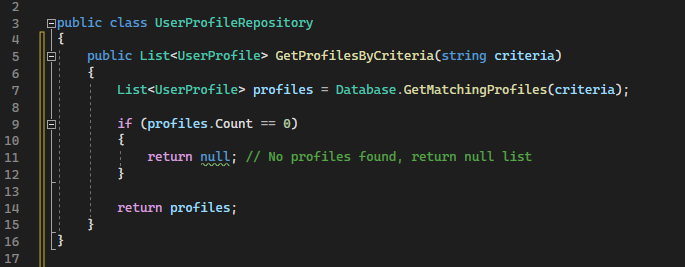Navigating the Return Values: Choosing Between Null or Empty Lists in Software Development
As a specialist in software development, I have encountered numerous instances where the decision to return a null or an empty list has played a pivotal role in designing robust and maintainable code. In this article, I will provide technical insights into when to use each approach and highlight code examples in C# to illustrate their appropriate usage.
Returning a null list is typically appropriate when the absence of a list holds specific meaning in the context of the application. For example, when retrieving a collection of user profiles based on certain criteria, if no profiles match the criteria, returning a null list can indicate that no results were found. Consider the following code snippet:

On the other hand, returning an empty list is more appropriate when a list exists but currently has no elements to return. This approach avoids potential null reference exceptions and simplifies code consumption, as developers can safely iterate over the list without additional null checks. Here's an example:

By consistently returning an empty list instead of null when appropriate, code consumers can rely on the list's existence and safely perform operations on it without additional null checks.
In summary, the choice between returning null or an empty list depends on the specific requirements of the application and the desired behavior in different scenarios. Returning null should be reserved for cases where the absence of a list holds specific meaning, while returning an empty list is preferred when a valid list exists but currently has no elements. Consistency, clear documentation, and effective communication with other developers are crucial to ensure proper interpretation and handling of these return values.
Alexandre Silva
Business Developer





